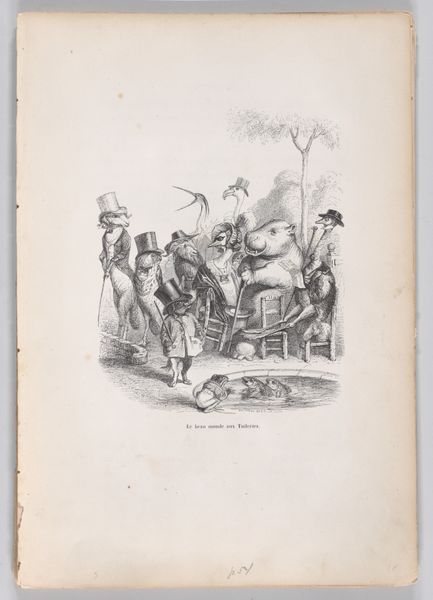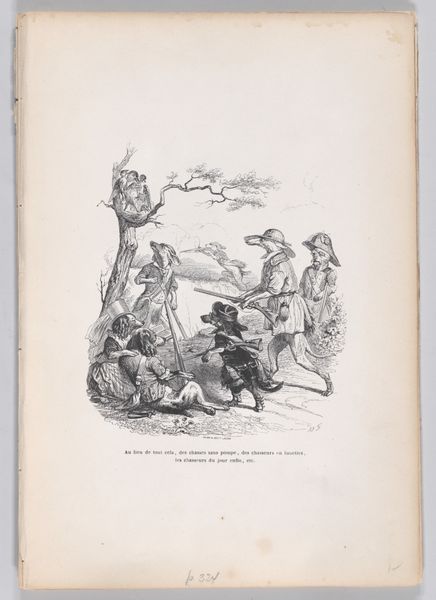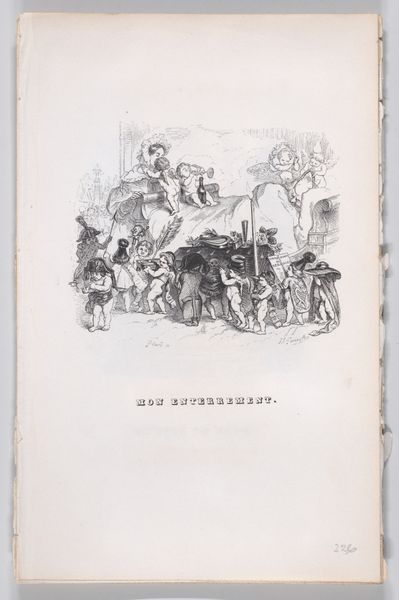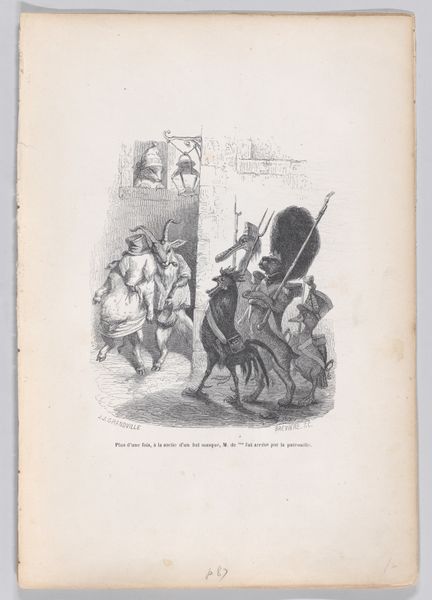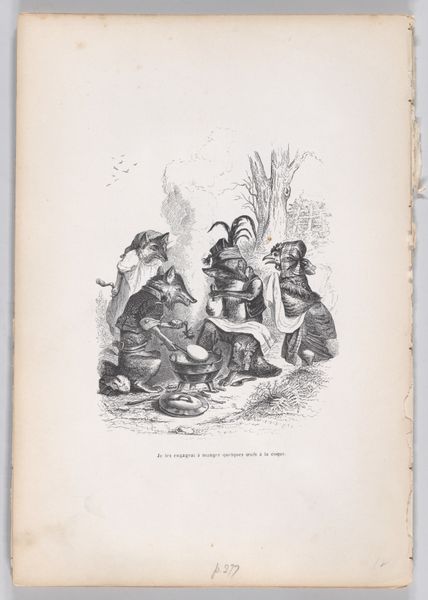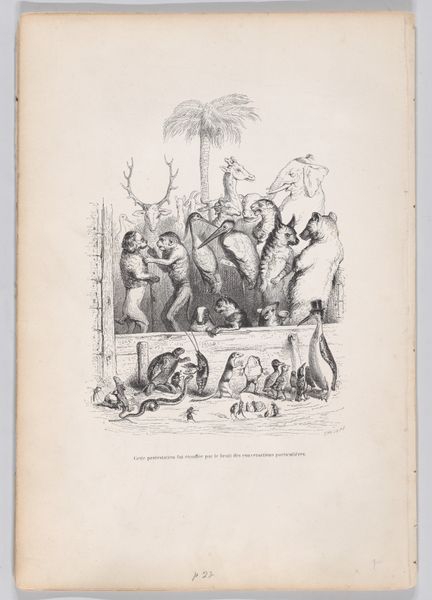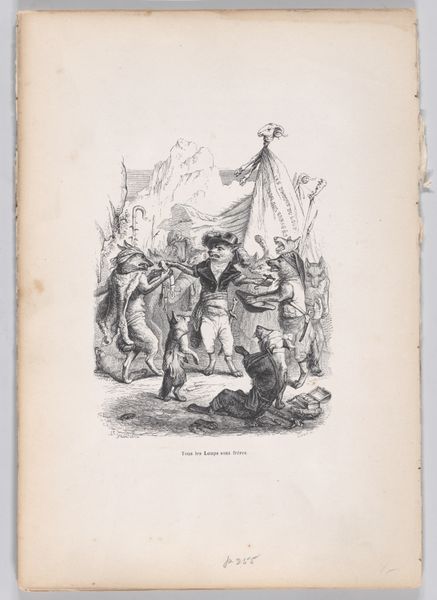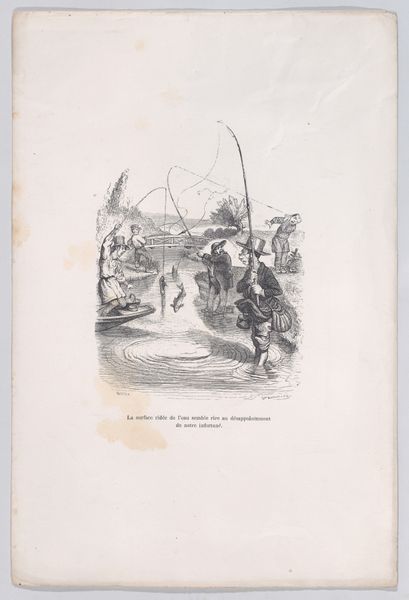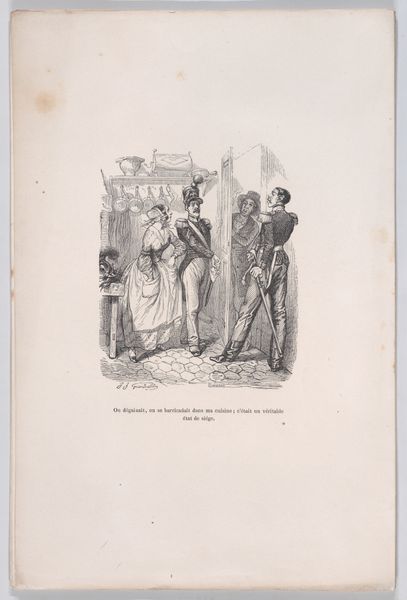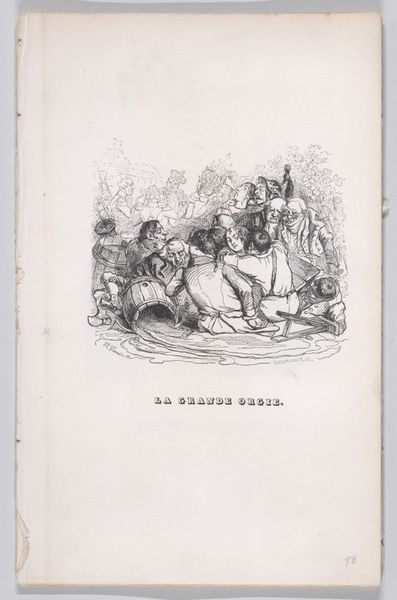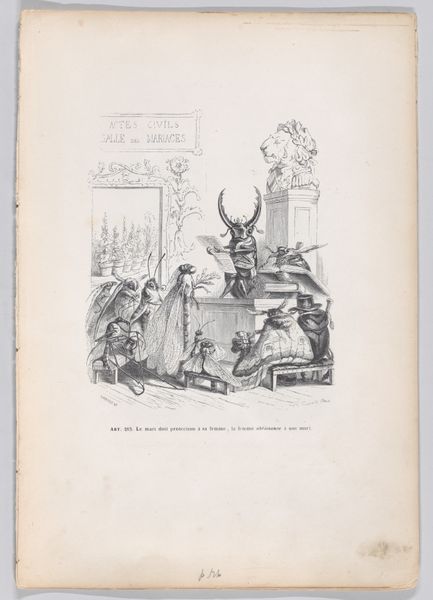
"Hold on to me, I am telling my witness..." from Scenes from the Private and Public Life of Animals 1832 - 1852
0:00
0:00
drawing, print, etching
#
drawing
# print
#
etching
#
caricature
#
romanticism
Dimensions: Sheet: 10 5/16 × 7 3/16 in. (26.2 × 18.3 cm)
Copyright: Public Domain
Curator: Let’s turn our attention to a fascinating etching and print by J. J. Grandville, created sometime between 1832 and 1852. The piece is titled "Hold on to me, I am telling my witness..." and comes from his series "Scenes from the Private and Public Life of Animals." What are your first impressions? Editor: I'm struck by its dark humor. The animals dressed in formal attire immediately bring a sense of ironic observation, of commentary. The line work is so detailed, but the scene as a whole has this delightfully absurd quality. Curator: Absolutely. Grandville was known for his social and political caricatures. The use of etching as a medium would have allowed for detailed lines that are easily reproduced, making it widely accessible, thus maximizing its social reach and, of course, influence. He clearly uses animal figures to critique human behavior. What about the arrangement of the figures in the composition itself? Editor: Well, my eye goes to the broken open case at the front and center. It implies a sort of scandal, something exposed and vulnerable, a key element made material. Then you've got these animals standing as witnesses, their stances quite telling. The sheep looks almost disapproving, detached, while the two in the front seem directly engaged in an encounter of some kind. And the location indicated by the sign, Bois de Boulogne, a popular public space where a confrontation would easily be witnessed. Curator: Exactly, the Bois de Boulogne acting as a backdrop for the drama plays with societal expectations and appearances, something Grandville skewers repeatedly. His prints often made commentary on marriage, wealth, and political corruption, reaching the burgeoning middle class that were eager consumers of this type of work. This print as an artifact really says a lot about the time it was created in. Editor: Looking closely, there’s so much attention given to the textures—the crisp lines defining their clothes, the differing textures of the fur, it adds a real depth, a narrative quality. The lines themselves dictate how we, as viewers, process this visual world, these animals acting out a very human scene of shame. Curator: Yes, the beauty of his craftsmanship truly underscores the moral underpinnings of these pieces. It’s important to remember that many saw it as not simply humor, but an indictment of their changing world. Editor: The piece certainly stays with you, the way the formal presentation and narrative interplay… it provokes thought about society then and our own. Curator: Agreed, it shows how art can affect societal change simply through the circulation and manipulation of materials that reveal greater truths about society itself.
Comments
No comments
Be the first to comment and join the conversation on the ultimate creative platform.
